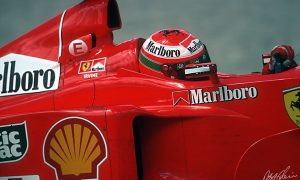
RED BULL ADDS A MONKEY SEAT
For the first time this season, Red Bull added ‘a monkey seat’ element at the rear of its RB12. The Milton Keynes-based outfit was the only team yet to run a Y100 winglet (the other name of the monkey seat) this year, as most cars sported the aero device in Barcelona and Monaco.
When competing at high-downforce circuits, F1 engineers look to tilt the rear wing as much as possible. An F1 rear wing has an optimum angle of attack, beyond which it starts losing lift. If the wing is too tilted, a stall phenomenon can happen, namely the air flowing below the wing cannot stay attached to it.
The air then slows down and goes straight ahead, which means it no longer creates a low-pressure area. In order to prevent this, a monkey seat element can be added in between the rear wing and exhaust pipe.
Basically, its purpose is to connect two streams of air – one coming from the diffuser (see blue lines) and one flowing under the rear wing (see white lines) – by using the exhaust gasses (see red lines).
The monkey seat creates a depression area above the exhaust pipe, which sucks the gasses upwards and towards the inner face of the wing. Thus, it forces the airflow under the wing to stay attached to it.
The Y100 winglet also contributes to further expanding the air at the back of the car, which increases the diffuser’s power and efficiency. The monkey seat device used by Red Bull in Hungary differed from the version they had briefly sampled in Barcelona’s pre-season testing.






